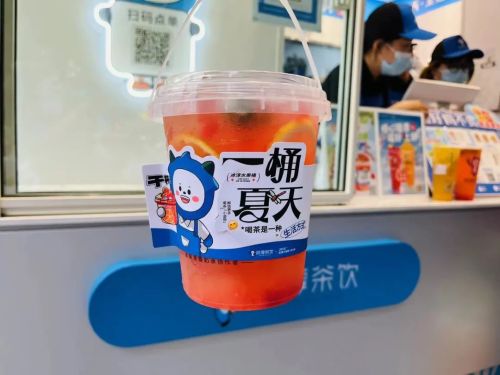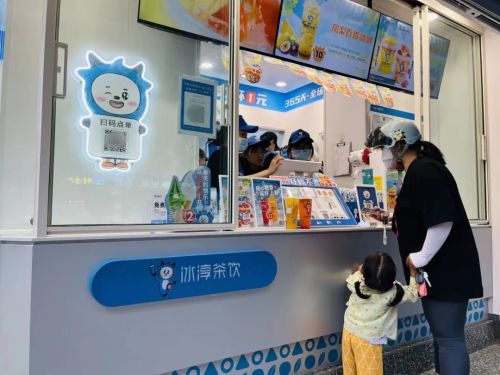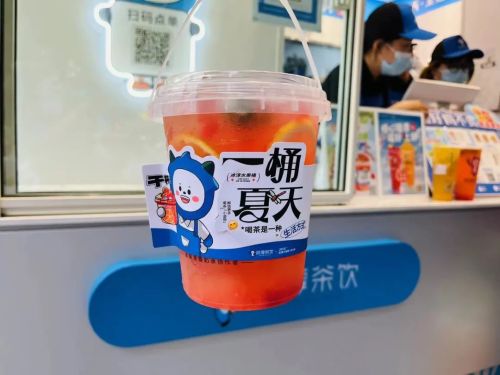Release time:2025-08-27 16:43:17 Publisher:Simply Iced tea
This brand is called Bing Chun Tea. Its drinks start at just 3 RMB per cup — even cheaper than Mixue.
For the past 4 years, they’ve run a permanent promotion: “Second cup only 1 RMB, every day of the year.”
And this isn’t just a few small shops. Bing Chun Tea has already opened over 1,000 stores in lower-tier cities.
Can another 10,000-store chain really come from the ultra-low-price market?

I first heard about Bing Chun Tea from someone in the industry. I was curious because it’s said to be cheaper than Mixue — and already has over 1,000 locations.
Many brands try to copy Mixue’s model, but very few are cheaper and still manage to build a large chain. So I decided to visit one of their stores.
The storefront is clean and fresh, with blue and white branding. Their mascot is a little blue cow named “Niu Xiaobao.”
The signs everywhere catch your eye: “Second Cup for 1 RMB, 365 Days a Year.” It’s on posters, stickers, menus, and LED screens.

Looking at the menu, I confirmed the prices really are lower than Mixue’s:
That day, they’d just launched a new bucket-sized fruit tea with six types of fruit. It costs 15 RMB, but with the second cup for 1 RMB, it comes out to just 8 RMB per cup — an offer that’s hard to refuse.
The staff told me this promotion has been running for 4 years and will likely continue forever.
Which made me wonder:
Can they really make money like this?
Is this a business where only the head office profits, and franchisees lose money?
To find out, I visited Bing Chun’s headquarters and spoke with the founder, Cheng Dong.
Cheng Dong shared two pieces of data:
The “second cup 1 RMB” strategy wasn’t a quick decision. Cheng was inspired by Zhengxin Chicken Cutlet and McDonald’s, which offer similar products. He also tested it in one store first — and saw sales double within months.
2019 Bing Chun made “365 days second cup 1 RMB” a core strategy. The headquarters also reduced its profit margin on ingredients to only 10%, sharing more profit with store owners so they could offer lower prices.
At the time, most of their 200+ franchisees were against the idea. Cheng and his team had to convince them one by one with data from the test store.
Bing Chun’s average gross profit is around 55% — lower than the industry average. However, since most stores are run by families in small towns, labor and rent costs are much lower.
The average store makes a profit, with daily summer revenue around 1,500 RMB. In 2021, 95% of stores remained open.
But is permanent discounting a good long-term strategy?
Many in the industry say no. They believe customers get used to discounts and stop responding.
However, Bing Chun has grown significantly thanks to this strategy. Here’s why:
With this “simple but effective” method, Bing Chun has quietly built a 1,000-store chain in less competitive markets.
Cheng Dong aims to reach 5,000 stores in 3 years and 10,000 in 5.
Can the budget drink market really support another giant?

This year, many believe the bubble tea market is saturated. Most brands are slowing down. New brands hardly have a chance.
However, throughout business history, there have always been opportunities for new players if they find the right angle and execute well.
For Bing Chun, becoming a large chain depends on operational strength and brand building.
Cheng Dong’s team has created an 81-page operations manual with more than 30,000 words. It includes 36 marketing tactics— gift giveaways to social media campaigns — designed to help store owners attract customers.
They also have a team of supervisors: 60 people for over 1,000 stores. Each supervisor is responsible for 15–20 stores and must visit each at least twice a month to ensure quality.
On the branding side, Bing Chun is just starting to promote itself on Douyin, Xiaohongshu, and Weibo.
If they can maintain store-level execution, build a reliable supply chain, and create a brand that people know and trust, Bing Chun may become the next big name in tea.
回顶部